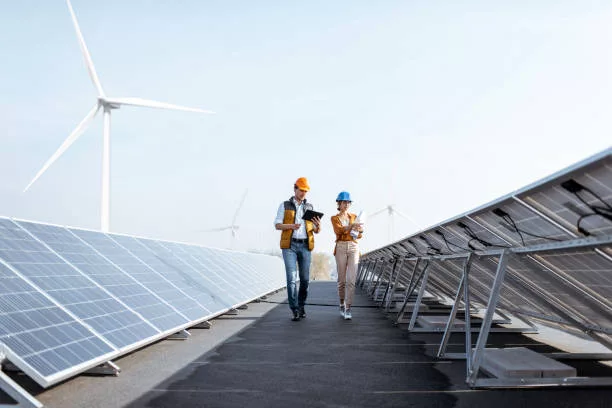The recent announcement by the U.S. Department of Energy (DOE) heralds a significant leap forward in President Biden’s agenda to revitalize local economies with clean energy jobs. An impressive sum of $1.93 billion from the Qualifying Advanced Energy Project Credit (48C) — part of the Inflation Reduction Act — has been allocated across 35 avant-garde projects in 20 states.
These pioneering initiatives are the embodiment of innovation, focusing on critical sectors like electric vehicle (EV) components, grid transformers, and solar technology manufacturing. By situating seven projects within energy communities formerly dependent on coal, the administration is fulfilling its promise to re-energize areas that have long supported the nation’s industry and workforce.
Recognizing the need for domestic manufacturing revival and the creation of quality jobs, U.S. Secretary of Energy Jennifer M. Granholm emphasized the significance of this clean energy shift. U.S. Secretary of the Treasury Janet Yellen highlighted the dual benefits of these investments: invigorating communities and bolstering energy security while simultaneously creating job opportunities.
Senior Advisor to the President for International Climate Policy John Podesta expressed the administration’s commitment to ensuring that communities at the heart of fossil fuel production transition to become powerhouses of the clean energy future. With another $10 billion pledged for additional 48C credits, the initiative aims to solidify the country’s manufacturing prowess in crucial areas.
Critical Advancements in Energy Technologies
The 48C tax credit is instrumental in stimulating clean energy manufacturing and recycling efforts, aimed at mitigating industrial greenhouse gas emissions. To be eligible for the full 30 percent tax credit, projects must adhere to prevailing wage and registered apprenticeship guidelines.
Clean Energy and Electric Vehicle Manufacturing
Among the projects benefiting from this initiative are 14 dedicated to manufacturing clean energy and electric vehicle products. They will significantly bolster America’s energy security with production ranging from crucial solar panel components to steel vital for wind energy developments.
Grid Modernization and Reliability
Another group of eight projects will concentrate on crucial grid components, from large power transformers to advanced battery storage solutions. This move seeks to tackle supply chain issues and ensure a robust, modern electrical grid supporting renewable energy and EV infrastructure.
Securing Critical Minerals and Materials
The United States is also strengthening its position in the global market by enhancing the production and refinement of critical minerals and materials, which are essential to technologies like electric motors and battery production. Five projects are set to improve the nation’s production capacity in this vital sector.
Industrial Decarbonization Initiatives
An emphasis on industrial decarbonization is evident in projects aiming to reduce emissions in steel, cement, and other energy-intensive sectors. By developing clean hydrogen and low carbon fuels, these eight projects contribute to a significant reduction in global greenhouse gas emissions.
Empowering Workforce and Communities
At the heart of these projects is a push for community and workforce benefits. Collaboration with educational institutions and training organizations is providing new career pathways in the clean energy sector, ensuring that the very workforce that powered the nation’s past now leads the way in its sustainable future.
The ongoing announcement showcases companies volunteering to be listed as beneficiaries of the 48C program, reflecting their commitment to transparent participation in this transformative journey. As the U.S. Department of Treasury and Internal Revenue Service gear up for a second round of the 48C program, companies are gearing up to further the reach of clean energy investments.
For more information about participating in these groundbreaking efforts, companies can direct their attention to the DOE’s Office of Manufacturing and Energy Supply Chains, tasked with the efficient management of the Qualifying Advanced Energy Project Credit (48C).

























